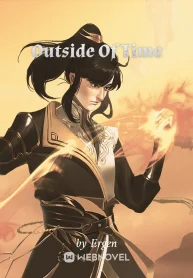The reason that Martial Apprentices did not gain much power from techniques of their creation or contribution that were highly individualistic versus techniques of another's was that their bodies were still shackled to human limits, barring their brain. Martial Apprentices also possessed nascent Martial Paths, thus even if a technique was highly synergetic with their Martial Art and body, it did not end up resulting in the kind of explosive power that the Void Pathfinder technique gave Rui by virtue of being synergetic.
The Martial Union had probably judged that while it would be truly ideal if Martial Apprentices did not use others' techniques and instead mostly created individualistic techniques that were compatible and synergetic with their strengths and weaknesses, it was an extremely difficult standard to hold them all to. The strength that they would gain would not be too much greater than if they mastered pre-existing techniques before slowly warming themselves up to the idea of creating techniques or contributing to them.
It was a pragmatic and rational approach that weight the pros versus the cons of the matter. However, it seemed that the G'aka'arkan Tribe was more idealistic surrounding the matter. Which Rui wasn't too surprised by, they were certainly not the most rational bunch.
However, it also meant that, to a degree, the G'ak'arkan Tribe valued dissemination viability to a lesser degree than the Martial Union. They would not aggressively spread the techniques that they would obtain from the Martial Union, most likely. They would probably keep using it as a stepping stone for creating new and more powerful techniques that incorporate elements of the Martial Art techniques that they would end up obtaining from the Martial Union.
"We encourage our Martial Apprentice to draw from existing techniques rather than using those same very techniques," She confirmed Rui's thoughts.
('It is probably because of this philosophy that the G'ak'arkan Tribe has developed unique techniques that even the Martial Union is lusting after,') Rui sighed inwardly with admiration.
From the very moment that he had been briefed about this mission, he had wondered something since.
How did a primitive tribe such as the G'ak'arkan Tribe develop so many unique, odd yet powerful techniques that even the Martial Union was willing to go out of its way to obtain them?
It didn't really seem to make much sense when one thought about it critically. After all, the Martial Union invested a huge amount of wealth and resources into funding research and development that optimized existing techniques and attempted to create new ones. This massive effort led to the research and development department of the Martial Union developing, or at least contributing to the development of nearly half of all the new techniques that the Martial Union happened to obtain.
The remaining came from Martial Artists like himself who submitted the technique for personal use and a license for propagation of the technique.
This was a significant influx of techniques with varying degrees of individuality that the Martial Union got in return for the tremendous amount of wealth.
Yet despite that, the G'ak'arkan Tribe had created numerous techniques that had attracted the greed of the Martial Union.
The reason for this was most likely because of the philosophy of the G'ak'arkan Tribe that allowed them to diverge from existing paradigms better than a Martial group of their size should have been able to, had they followed a paradigm of Martial Apprentice guidance that was quite similar to the one that the Martial Union.
('Maybe, the Martial Union should follow in the G'ak'arkan Tribe's footsteps,') He mused for a second, before shaking his head inwardly. He was getting distracted.
"Well, thankfully, it seems that that may be the only difference in our evaluation of the value of techniques," Rui nodded. "It isn't ideal, but it shouldn't pose too much of a problem."
At the end of the day, as long as neither side perceived the value of what they were giving to be less than that of what they were receiving, the deal would be acceptable to both sides. There were ways to ensure that this was the case even if both sides did not have the same appraisal of techniques.
For example, the Martial Union could offer techniques that with low dissemination viability in exchange for techniques that it would have valued more than what it was offering since it did care for dissemination viability. In this case, the trade would be acceptable to both sides since the G'ak'arkan Tribe did not care for dissemination value as much as the Martial Union and the Martial Union would have what it would consider to be a winning trade.
The same could occur in the reverse. The G'ak'arkan Tribe could give techniques with high dissemination viability in return for techniques that were even more valuable, to the tribe, since it cared less for dissemination viability than the Martial Union did.
Rui was confident that it was possible for both sides to come from trades that both sides found agreeable and acceptable.
"Hm..." She hummed as she considered Rui's explanation. "Even if that manages to work out, demonstrating the power of a technique is not that straightforward. After all, techniques do not exist by themselves, they exist in Martial Artists who can execute them. I think the evaluation of their power depends on the mastery of the Martial Artist, does it not?"
She raised a very good point. Even if a technique was powerful, if the person executing them had not mastered them properly, then the technique would not function properly and would produce shitty results.
On the contrary, a technique could be evaluated to be more valuable than it actually was if the Martial Artist had mastered it to an extremely high degree.
One example of this that immediately came to mind was his friend Hever and his trusty sole technique Meteor Swing. That technique was a grade-nine technique, however, Hever had mastered it to such a ridiculously high degree, that it had eventually obtained parity with a grade-ten technique.







